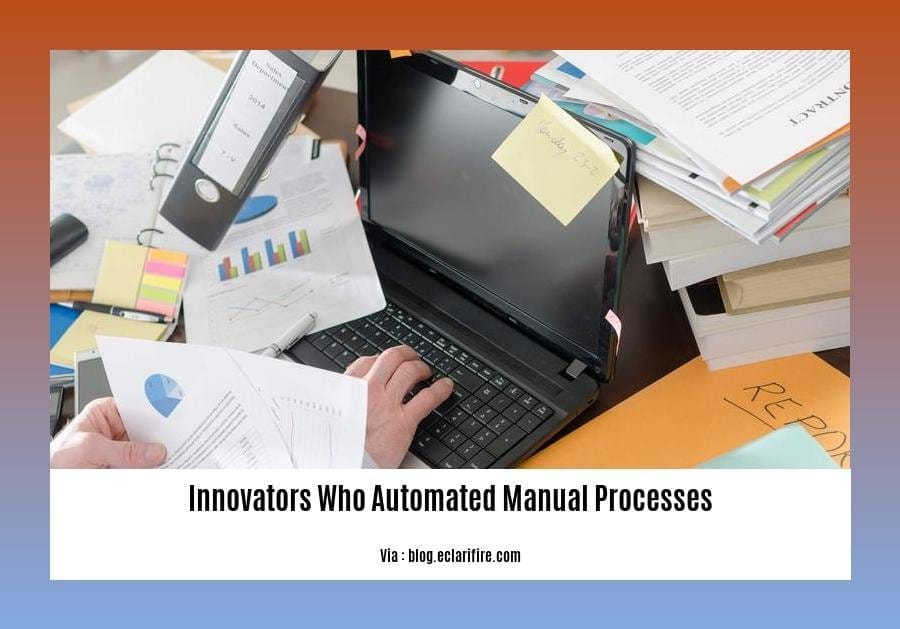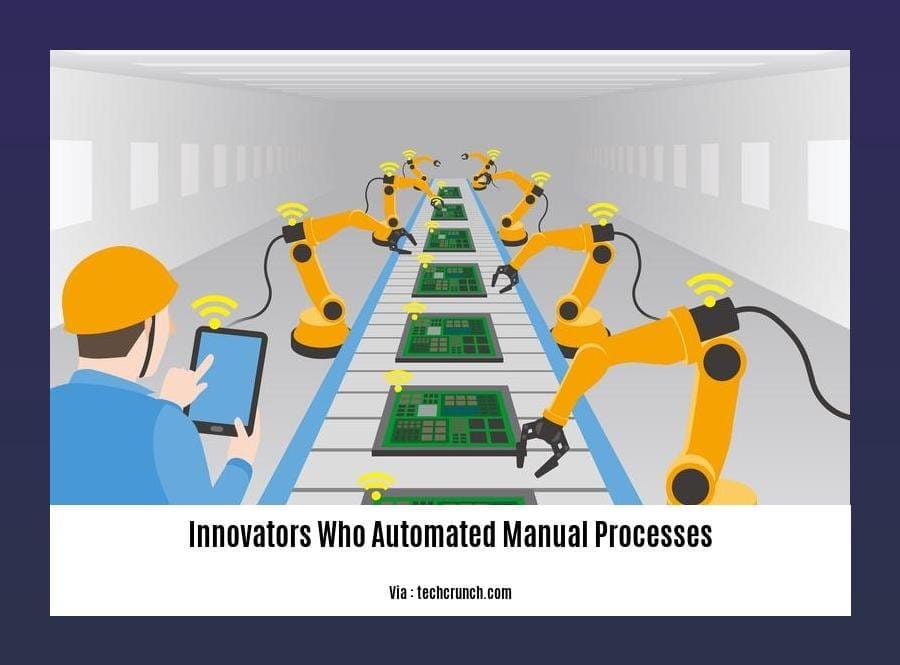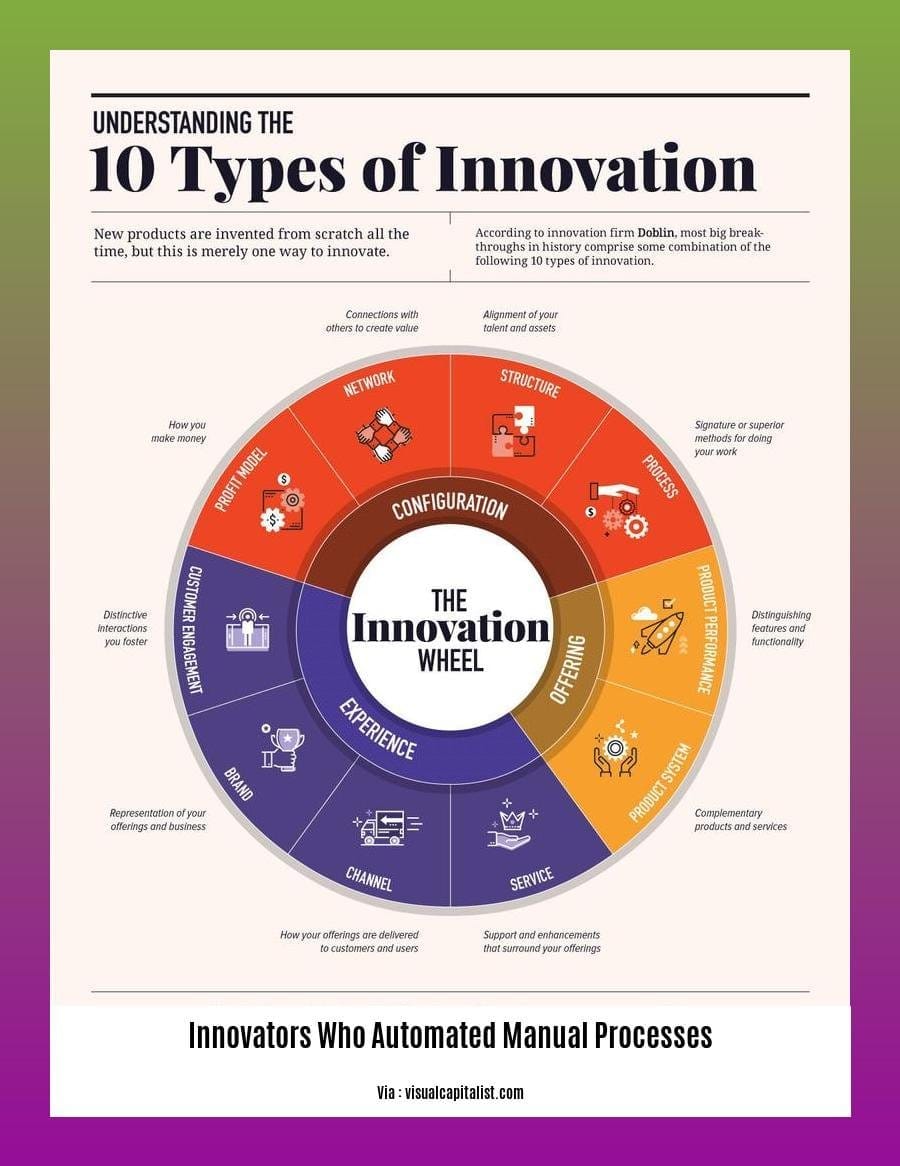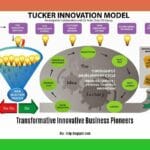Embark on a transformative journey with “Innovators Who Automated Manual Processes: A Journey of Transformation.” Dive into the world of automation, where manual processes have been relegated to the past. Discover the benefits and challenges of automating your operations, from enhanced productivity and streamlined workflows to the unlocking of new horizons. Witness real-world examples of how automation is revolutionizing manufacturing, exploring how innovators are harnessing technology to reshape their industries. Join us as we explore the transformative power of automation and empower you to embrace its potential, unlocking unprecedented growth and innovation for your business.
Key Takeaways:

- Automation involves using technology to automate tasks with minimal human intervention.
- Processes suitable for automation include those that are repeatable, complex, and high-volume.
- Automation reduces human errors, improves accuracy, and enhances reliability.
- Follow a step-by-step automation process to ensure successful implementation.
- Automation benefits include error reduction, increased efficiency, improved compliance, and enhanced customer satisfaction.
Innovators Who Automated Manual Processes: A Journey of Transformation
Delve into the transformative journeys of innovators who automated manual processes, unveiling the strategies they employed to streamline operations, enhance efficiency, and disrupt industries.
Automation has emerged as a potent force, empowering businesses to replace repetitive, time-consuming tasks with intelligent solutions, enabling them to focus on strategic initiatives. Join us as we explore the trailblazers who dared to automate manual processes, unlocking a world of possibilities.
Unlocking the Power of Automation
Step 1: Identify Automation Candidates
Identify processes that are highly repetitive, complex, and prone to human error. These are prime candidates for automation, offering significant potential for efficiency gains and error reduction.
Step 2: Define Objectives and Workflows
Clearly define the desired outcomes and document the current workflows. This provides a roadmap for automation solutions, ensuring they align seamlessly with business objectives.
Step 3: Evaluate Solutions
Research and consult with automation providers to determine the most suitable solutions for your needs. Consider factors such as functionality, scalability, and cost-effectiveness.
Step 4: Implementation and Testing
Implement the automation solution and conduct thorough testing to ensure it meets performance expectations and integrates seamlessly with existing systems.
Benefits of Process Automation
Enhanced Accuracy and Reliability
Automation eliminates human factors that can lead to errors, ensuring consistent and precise execution of tasks.
Increased Efficiency and Productivity
Automated processes streamline operations, freeing up valuable time for employees to focus on higher-value activities.
Improved Compliance
Automated systems enforce adherence to regulations and quality standards, mitigating risks and improving compliance.
Better Customer Experience
Automation enables faster turnaround times and error-free service delivery, enhancing customer satisfaction.
Discover the pioneers of autonomous systems and automation who are leading the charge towards eliminating human toil through pioneering automation and developing breakthrough self-operating innovations.
Automation Challenges
As we delve into the world of automation, it’s crucial to recognize the potential hurdles that may arise along the way. Understanding these Automation Challenges is essential to navigate the complexities of process transformation effectively.
Types of Automation Challenges
Technical Challenges: Implementing automation can be a complex endeavor, requiring technical expertise and resources. Challenges may arise due to incompatible systems, data integration issues, or unforeseen technical limitations.
Organizational Challenges: Automating manual processes often necessitates organizational changes and alignment. Resistance to change, lack of buy-in, or misalignment between business and technical teams can hinder successful implementation.
Data Challenges: Data plays a critical role in automation. Challenges may arise due to insufficient data, poor data quality, or difficulties in accessing and managing data effectively.
Cost Challenges: Automation can involve substantial upfront investments. Organizations must carefully assess the costs associated with hardware, software, implementation, and ongoing maintenance.
Overcoming Automation Challenges
Thorough Planning: Meticulous planning is vital to mitigate Automation Challenges. Clearly define goals, identify processes, and address potential technical, organizational, and data hurdles proactively.
Data Governance: Establish robust data governance practices to ensure data accuracy, consistency, and accessibility. This will strengthen the foundation for effective automation.
Change Management: Gaining buy-in from stakeholders and managing organizational change is crucial. Communicate the benefits of automation, address concerns, and provide training to ensure a smooth transition.
Phased Implementation: Break down the automation process into smaller, manageable phases. This will allow for incremental progress, learning, and adjustment along the way.
Continuous Improvement: Automation is an ongoing journey. Continuously monitor and evaluate the effectiveness of automated processes, identify areas for improvement, and adapt to evolving business needs.
Key Takeaways:
- Automation Challenges are prevalent in the implementation of automated processes.
- Technical, organizational, data, and cost challenges must be acknowledged and addressed.
- Thorough planning, data governance, change management, phased implementation, and continuous improvement are crucial for overcoming Automation Challenges.
- By proactively navigating these challenges, organizations can unlock the full potential of automation and transform their manual processes.
Citation:
- McKinsey & Company: Intelligent Process Automation
Examples of Automation in Manufacturing
Are you ready to embark on a transformative journey by automating your manufacturing processes? Joining the ranks of innovators who have harnessed the power of technology to streamline their operations, you’ll discover a world of enhanced efficiency, reduced errors, and newfound opportunities.
Embracing Automation in Manufacturing
To understand the transformative impact of automation, let’s delve into specific examples that showcase its prowess in manufacturing:
Welding and Painting Automation: Robots wielding precision tools have taken over repetitive and hazardous tasks like welding and painting, ensuring consistency and reducing risks.
Inventory Management Automation: Software and machines now manage inventory levels, optimizing storage space, minimizing wastage, and preventing stockouts.
Inspection Automation: Machine vision systems and sensors have replaced manual inspections, conducting quality checks with unmatched accuracy and speed.
Predictive Maintenance Automation: Artificial intelligence algorithms analyze data to predict equipment failures, enabling proactive maintenance and minimizing unexpected downtime.
These examples illustrate how automation can revolutionize manufacturing by augmenting human capabilities and unlocking new levels of productivity.
Key Takeaways:
- Automation empowers manufacturers to streamline manual processes, unlocking efficiency gains.
- Reduced errors and improved quality ensure customer satisfaction and enhance brand reputation.
- By eliminating repetitive tasks, automation frees up human workers for higher-value activities.
- Embracing automation is a strategic investment that drives innovation and competitiveness in manufacturing.
Relevant URL Source:

FAQ
Q1: What is automation?
A1: Automation refers to the use of technology to execute tasks with minimal human involvement.
Q2: What are the advantages of automating manual processes?
A2: Automation offers several benefits, including reduced errors, increased efficiency, improved compliance, and enhanced customer satisfaction.
Q3: What are the challenges associated with automation?
A3: Common automation challenges include misalignment between technical and business teams, insufficient data, and resistance to change.
Q4: What are some examples of automation in manufacturing?
A4: Automation in manufacturing encompasses various applications, such as robotics, 3D printing, inventory management automation, and predictive maintenance.
Q5: Why is automation important?
A5: Automation plays a crucial role in streamlining processes, improving productivity, and unlocking new opportunities for businesses seeking to leverage technology effectively.
- Beyond the Beat: Unveiling Interesting Dance Facts from Around the World - July 26, 2024
- Unlocking Fleet Efficiency: Captivating Facts About FleetFinder - July 26, 2024
- Peel Back the Facts: The Unexpected Wonders of Banana Cleaner - July 26, 2024
















